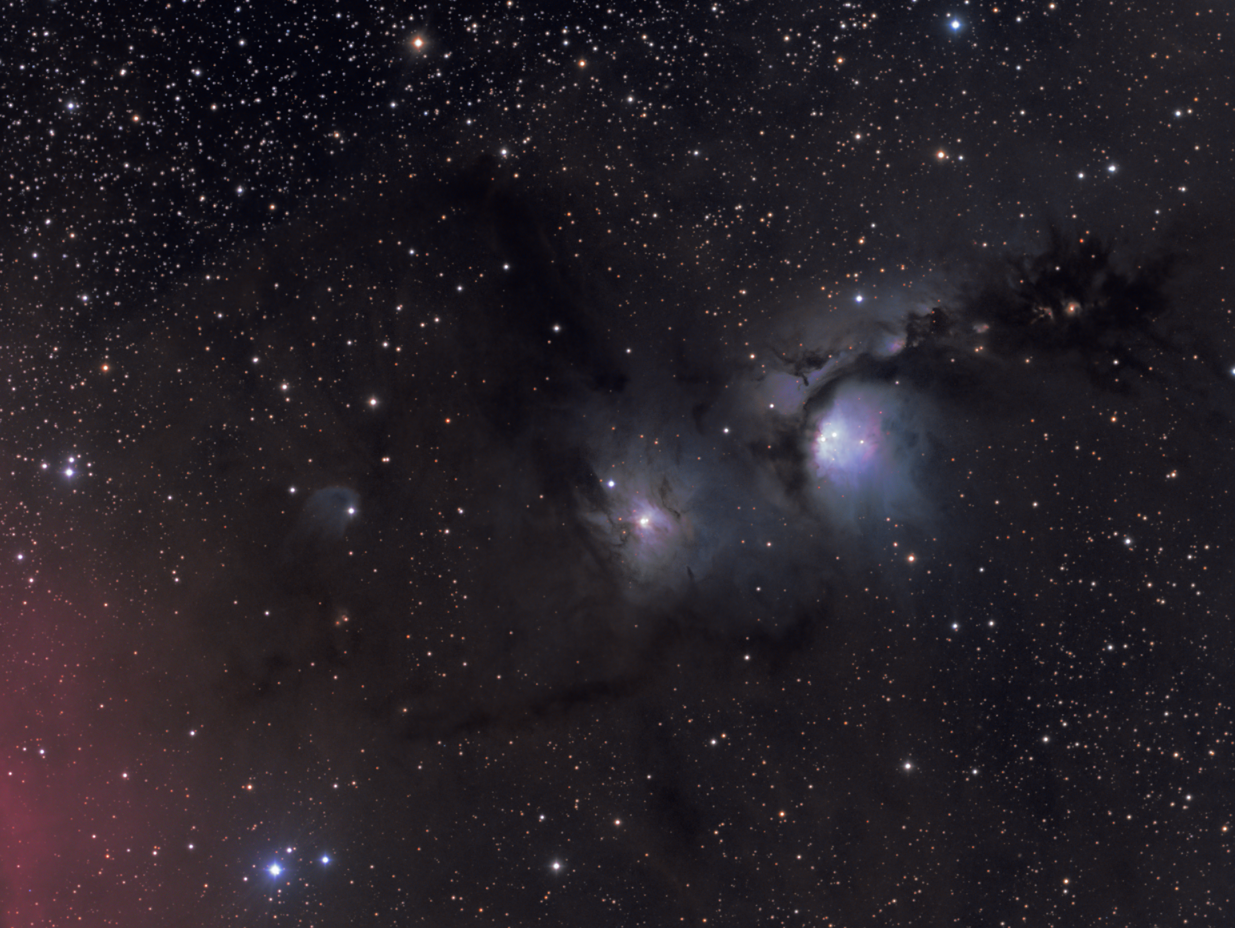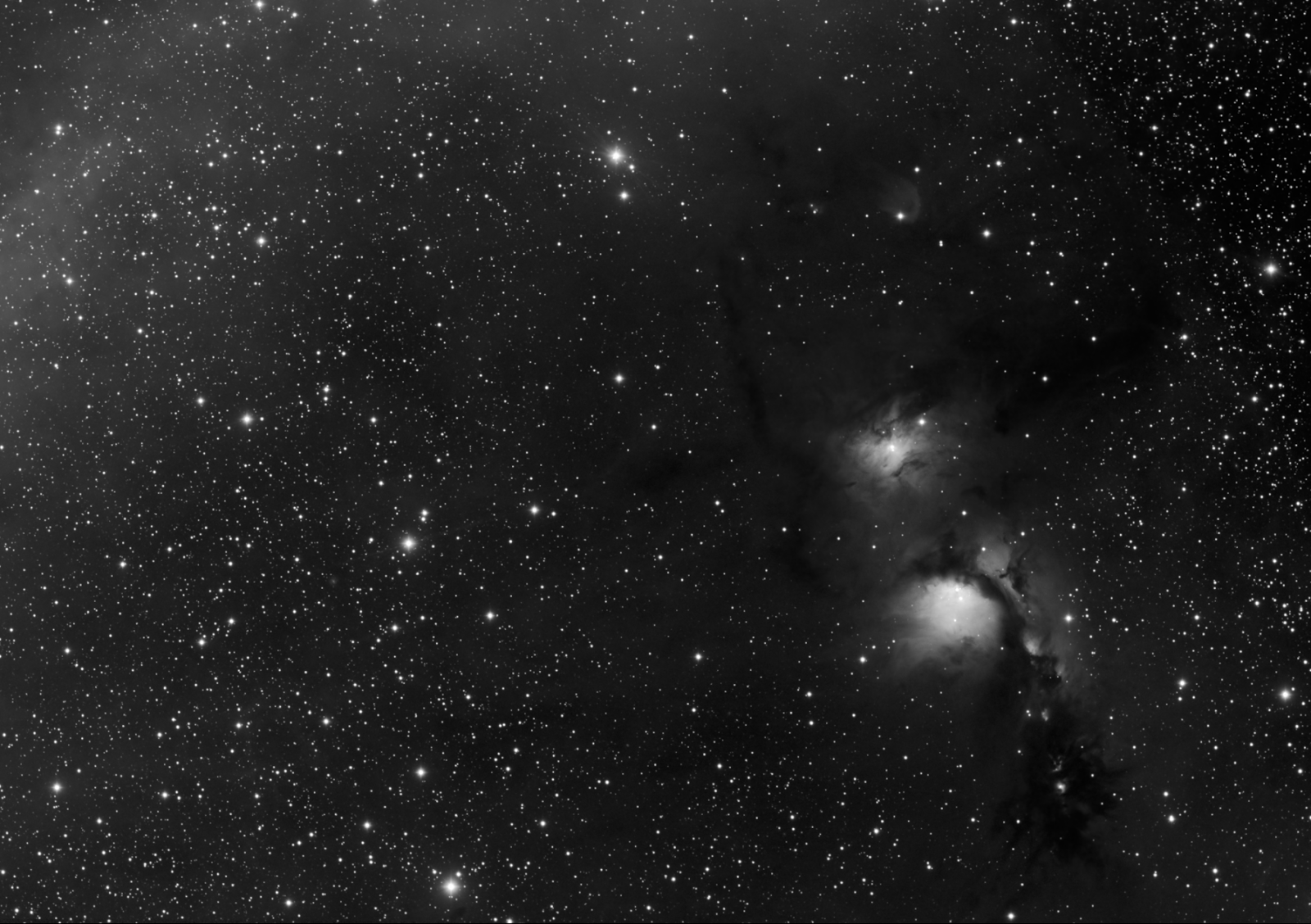Just above and to the left of M82 is a congregation of tiny smudges that constitute a cluster of galaxies. The brightest members are dimmer than 17 magnitude: PGC 2732102 and PGC 2732338.
Scattered throughout the area are clouds of dust in our own galaxy. Galactic cirrus, we call them, but they are relatively local.
The M81-82 group we suspect is about 12 million light years away. The galaxy clusters above and left of M82 may be hundreds of millions of light years away.
This image is 68x900" of Luminance from the dark, dark skies of Deep Sky West. The image has been re-sized to 50% less to handle the blog format.



